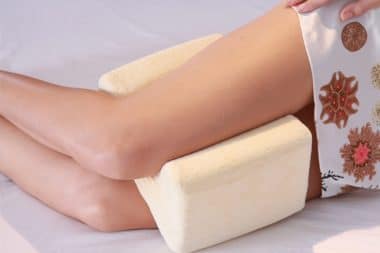Miserable Malalignment Syndrome is a term used to describe a set of anatomical changes to the legs that cause knee pain and instability. The most common change being the internal rotation of the femur (thigh bone), this rotation usually occurs at the distal end where the femur forms the knee joint. Secondly is an inward facing patella (kneecap), which is referred to as a “winking patella”. The lower leg (tibia and fibula) rotate outward and then the feet are flat.

Causes
Miserable Malalignment Syndrome is most commonly experienced among runners, but also occurs to bicyclists, basketball and volleyball players. Contact sports such as football and rugby also put athletes at risk for developing Miserable Malalignment syndrome. Repetitive exercises like lunges and squats put athletes at risk for the condition also.
It can be caused by an injury to the knee joint and then develop afterwards as result of the injury. Injuries such as meniscus tears or patella tendonitis may leave the longer lasting result of Miserable Malalignment Syndrome after the injury has healed. Degeneration of the patella from causes such as osteoarthritis and Chondromalacia patellae may also result in Miserable Malalignment Syndrome.
Symptoms
Symptoms of Miserable Malalignment Syndrome include;
- Anterior knee pain
- Pain under the patella
- Stiffness of the knee joint
- Progressive aching or grating pain
- Excessive grinding, popping, and clicking sounds on knee flexion
- Knee joint giving out painfully
- Knee doesn”t lock or catch
These symptoms may be aggravated by going up and down stairs, running, excessive squatting, or sitting with the knees bent for prolonged periods of time. Other signs of the condition are excessive pronation while running, no knee effusion, abnormal patellar alignment and tracking, increased Q angle of the knee, and tenderness of the knee joint.
Diagnosis
While signs and symptoms may make it probable that one is suffering from Miserable Malalignment Syndrome, the only way to be certain is to have it examined by an orthopedic physician. X-rays will determine if this is indeed the case.
Treatment
Treatment of the injury at first may be as simple as ice therapy and NSAID”s to control the swelling and inflammation of the knee joint. Rest therapy is also utilized. Limiting use by restricting running, walking, squatting, lunging, and monitored exercise utilizing swimming, biking or an elliptical trainer is also common therapy for Miserable Malalignment Syndrome.
Lower extremity exercises for improving leg strength and stretching as well as isometric resistance exercises are also used for therapy for the condition. Use of a knee brace may be recommended during exercise.
For advanced cases of Miserable Malalignment Syndrome that simple exercise therapy doesn”t help, surgery may be required to correct the condition, but this is usually only necessary in less than %10 of the cases.
Your Action Steps:
- 1A very popular natural cure is Titanium impregnated wraps and tape, it helps many people and are worn by many professional athletes. click here
- 2Check your ideal weight to see if you are putting extra stress on your knees.
- 3Get our FREE Calorie Deficit Report!







